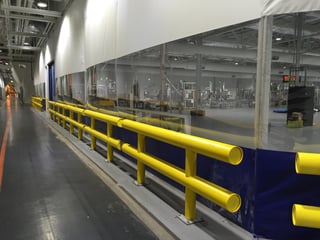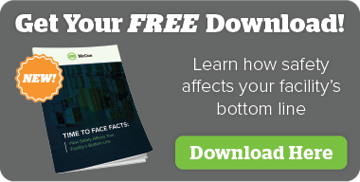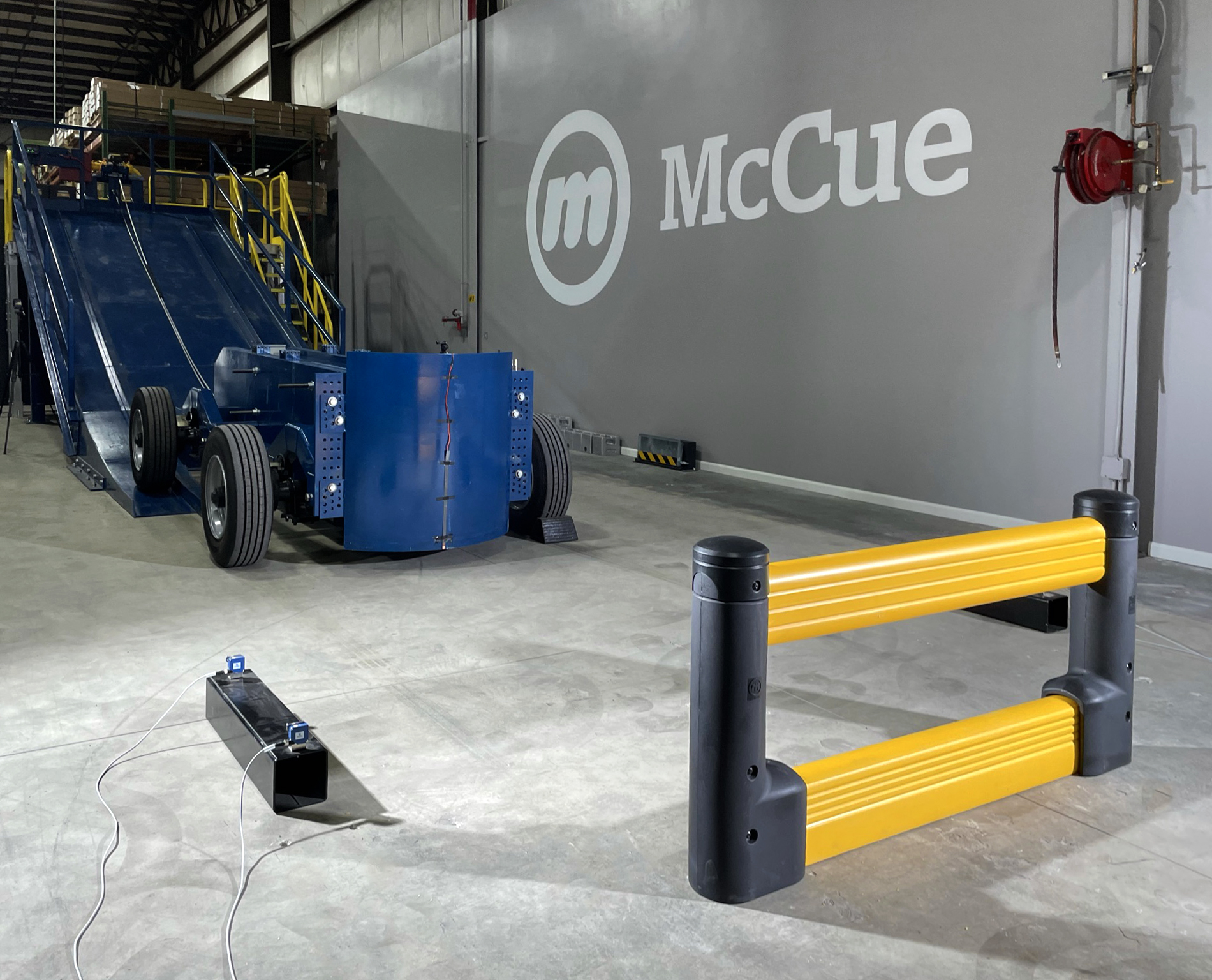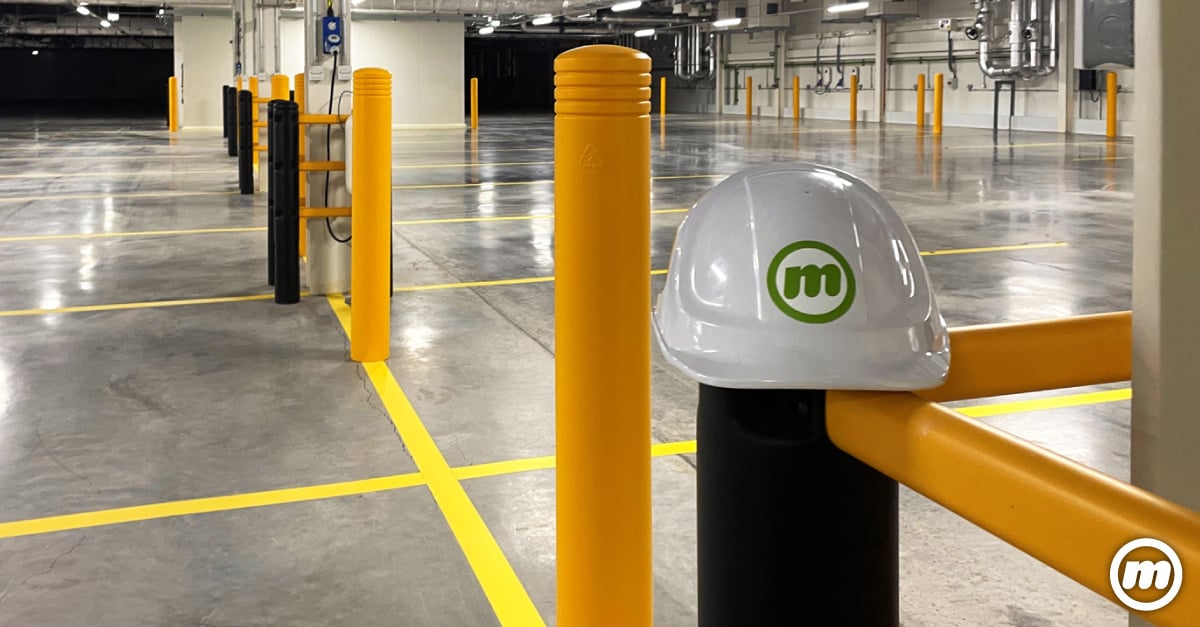In a facility, there's nothing more important than keeping your workforce safe from any and all potential injuries. When heavy machinery operates in close proximity of your employees, damage prevention products should always be leveraged to offer total warehouse protection. But not all products are created equal. Let's take a look at both bollards and barriers and dive into some of the maintenance issues that can arise as these solutions work to create a safe environment.
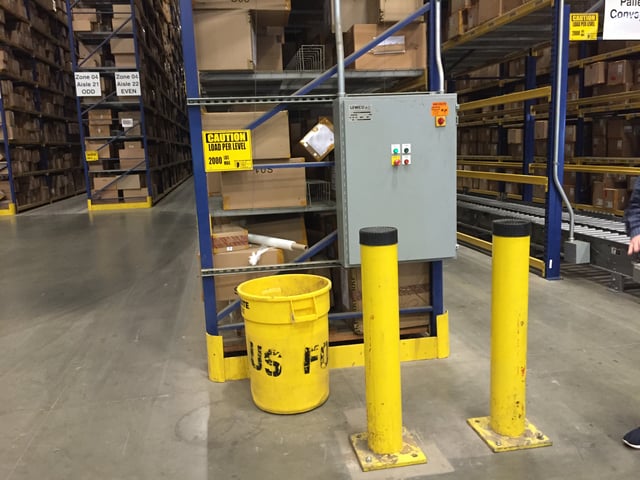
Bollards
What is a Bollard?
A bollard is a standalone post, typically steel, short, and sturdy and anchored in a hard surface such as concrete. The low profile, post-shaped deterrent is built with the purpose of blocking vehicle movement from all directions, while allowing for full pedestrian movement. Bollards are designed to withstand high impacts and deflect potential blows away from the object or area they’re in place to protect.
Understanding Bollard Types
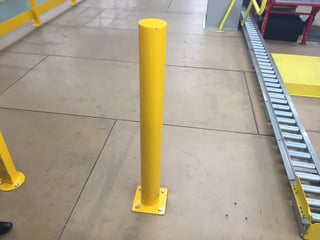 There are a variety of bollards types which offer a variety of protections.
There are a variety of bollards types which offer a variety of protections.
There exists a rating system for the standards by which these bollards (and barriers) are judged. The standards are based on perpendicular impact at a certain speed, with the highest rating indicating the strongest protection (i.e., a vehicle could ram this bollard/barrier at a higher speed). Read more on K ratings here.
Anti-ram bollards
Anti-ram-raid bollards — also referred to as K-rated — are security bollards to prevent vehicles from crashing through them. K4, K8 and K12 ratings offer various levels of protections against different size vehicles.
Safety bollards
These bollards give your warehouse or distribution center path and road definition, diverting traffic and intrusions. If traffic flow matters in your warehouse, these bollard types matter.
Architectural and Landscaping bollards
Though landscaping bollards offer much the same function as architectural bollards, they may differ in that they may be more focused on aesthetic than function, though function is still achieved.
Where are Bollards Used?
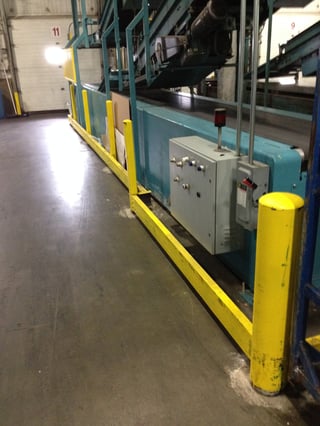
Bollards can be used throughout many different areas of your facility. A pair could be installed to mark a doorway, one to protect a high traffic corner, or they can even be spaced in series to define an area in place of a full guardrail. They can be used as filtration of sorts, creating lanes to separate vehicle and equipment traffic from human traffic. Typical areas you’d find bollards in a facility include: in front of utilities, sprinkler systems, or machinery — really any area you’d like to protect against potential vehicle impact but still allow for pedestrian thoroughfare.
Typical Bollard Maintenance
Once a bollard is installed, assuming it never comes in contact with a vehicle, there’s very little maintenance you’d need to perform to ensure that the bollard continues to function properly. But as with most protective guarding products in your warehouse, that’ll likely never be the case: it will probably come in contact with a vehicle. As small impacts occur, bollards tend to get scraped, scratched and can even rust as their finish wears off. These small impacts, while seemingly low in priority, can add up to a lot of maintenance in order to keep your facility looking nice. Our FlexCore Bollard is engineered to be self-maintaining, so repairs and repainting are fully eliminated from the maintenance budget.
But it’s the large impacts that'll cause the most headaches for your team. As most bollards are steel, core-drilled, filled with concrete and/or embedded deep into a hard surface, major problems are caused if a vehicle were to come in contact at a high rate of speed or carrying a heavy load. If such an accident occurs, it’s likely to cause extensive damage to the vehicle, the bollard, and likely the concrete the bollard is embedded in. If the bollard is surface-mounted, it might pull up the anchors and surrounding concrete, requiring immediate repair. Consider a flexible safety bollard as a better alternative — that way, relaying concrete and welding a bent steel bollard won’t eat away your maintenance budget.
Barriers
What is a Barrier?
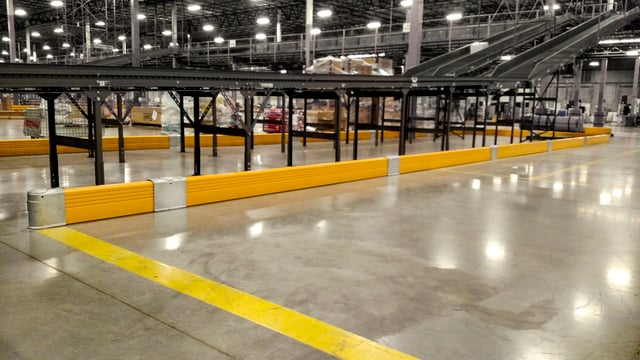 A barrier is just like a guardrail. As a material handling solution, it offers more linear protection than a bollard. Barriers are used to prevent both people (in the case of guardrails) and vehicle movement (in the case of crash barriers), across a large area. Barriers are typically constructed of steel or concrete and are designed with the sole goal of protection.
A barrier is just like a guardrail. As a material handling solution, it offers more linear protection than a bollard. Barriers are used to prevent both people (in the case of guardrails) and vehicle movement (in the case of crash barriers), across a large area. Barriers are typically constructed of steel or concrete and are designed with the sole goal of protection.
Where are Barriers Used?
You'll find a barrier in place to protect wide stretches of racking and walls in a facility. You'll find them mounted to the floor, with a small amount of space between the barrier and protected assets in case of impact. They're used at rack ends, to protect utilities, around machines and conveyors, and anywhere you want to designate and segregate a space. Guardrail barriers are typically painted a highly visible color and can be used to define the working areas in a facility. In a manufacturing setting, a well-placed system of guardrails will serve as a visual cue for where pedestrians and vehicles are — and more importantly aren’t— supposed to be.
Typical Barrier Maintenance
Much like the bollard, barriers are prone to scratches, dents and abrasions when a vehicle comes in contact with their surfaces. As the finish wears off these products, catching and tripping points become a constant concern for damage to both vehicles and pedestrians that cross their path. With barriers, larger impacts tend to cause extensive damage to the vehicle and can even cause severe injury to the driver themself as the impact is redirected back into the vehicle. In addition, steel barriers often fail after a single impact. They get dented, mangled or they, like bollards, pull out their anchors and damage the concrete.
With a shock-absorbing, modular barrier or guardrail system from McCue, you can safely protect racks and perimeters, while keeping your employees safe in the process. They can take a hit more than once and they'll treat your equipment more gently. As your facility grows, these damage prevention products can evolve in turn as they are easy to install and relocate to meet the needs of your facility. And with a product line that has a consistent look and feel, you can ensure your facility not only looks great, but is as safe as it looks.


